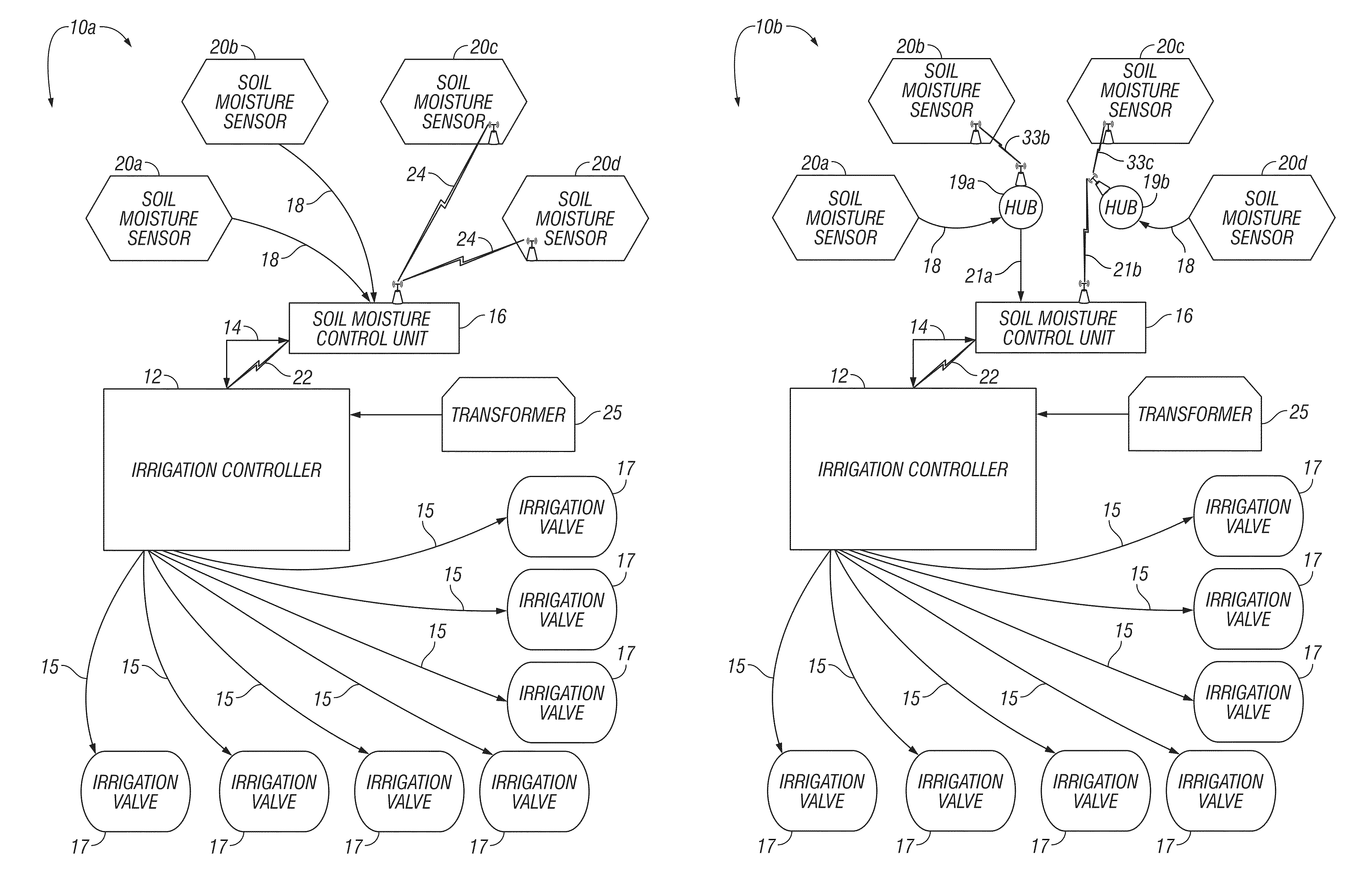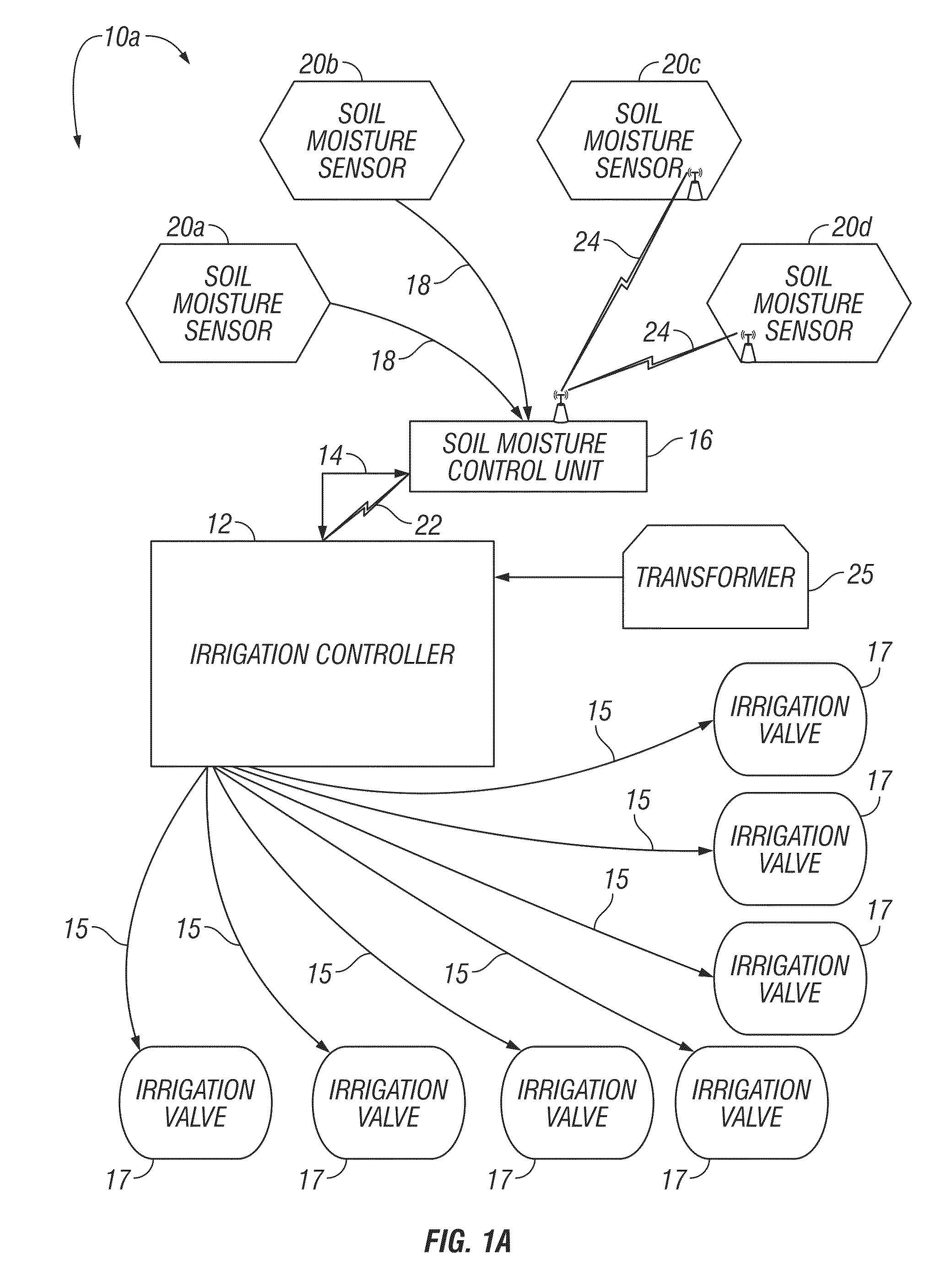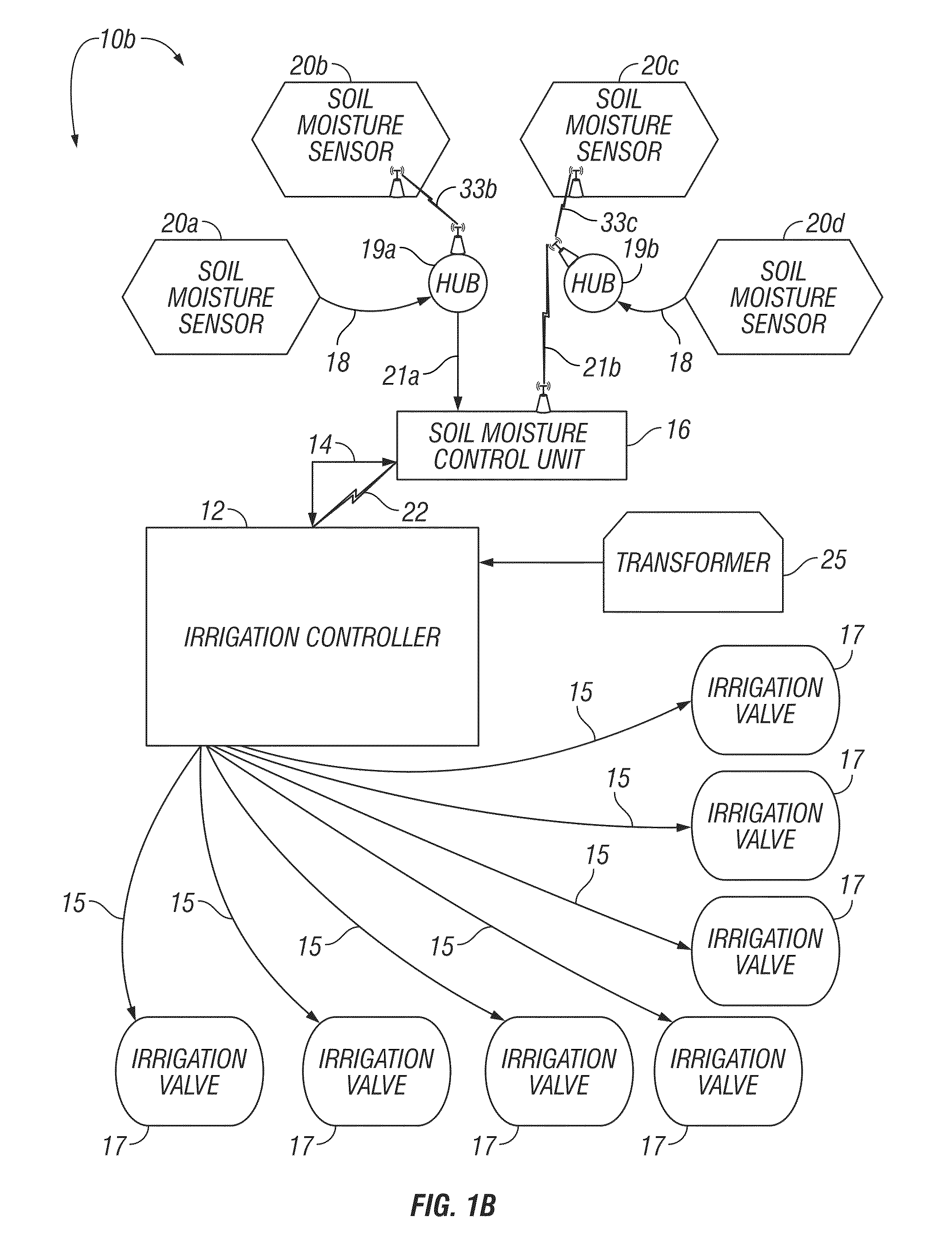Irrigation system with multiple soil moisture based seasonal watering adjustment
a technology of irrigation system and seasonal watering schedule, which is applied in the direction of electric controllers, ignition automatic control, instruments, etc., can solve the problems of large amount of water wasted, increased complexity for users, and adjustment feature not producing the optimal watering schedul
- Summary
- Abstract
- Description
- Claims
- Application Information
AI Technical Summary
Benefits of technology
Problems solved by technology
Method used
Image
Examples
first embodiment
[0043]Referring to FIG. 1A, in accordance with the present invention, an irrigation system 10a comprises a stand alone irrigation controller 12 connected via cable 14 to a stand alone soil moisture control unit 16 that is in turn connected via buried multi-wire cables 18 to a plurality of soil moisture sensors 20a-20b. It will be understood that the many advantages of the present invention can be achieved with a single soil moisture sensor, however, multiple soil moisture sensors are preferred. FIG. 1A illustrates various means for communication between the soil moisture sensors 20a-d and the soil moisture sensor control unit 16. The controller 12, soil moisture unit 16 and one or more soil moisture sensors 20c and 20d exchange data and commands via wireless communication links 22 and 24.
[0044]The stand alone irrigation controller 12 (FIG. 1A) and soil moisture control unit 16 would typically be mounted in a garage or other protected location, although they can have a waterproof con...
second embodiment
[0046]Referring to FIG. 1B, in accordance with an the present invention, an irrigation system 10b comprises a stand alone irrigation controller 12 connected via cable 14 to a stand alone soil moisture control unit 16. This figure illustrates alternate means for communication to and from the soil moisture sensors 20a-d and the soil moisture sensor control unit 16 through communications hubs 19(a-b). Soil moisture control unit 16 is connected via cable 21a to a communications hub 19a. Communications hub 19a is connected to soil moisture sensor 20a using cable 18 and wireless connection 33b is used to communicate with soil moisture sensor 20b. Soil moisture sensors 20c and 20d communicate with communications hub 19b using wireless connection 33c and cable 18 respectively. Communications hub 19b communicates through wireless link 21b to the soil moisture control unit 16. The controller 12 and soil moisture control unit 16 would typically be mounted in a garage or other protected locatio...
third embodiment
[0048]Referring to FIG. 1C, in accordance with the present invention, an irrigation system 10c comprises a standalone irrigation controller 12 connected via cable 14 to a standalone soil moisture control unit 16 that is in turn connected via a multi wire cable 23 to one or more decoder modules 24. Each soil moisture sensor 20a-d is connected to a decoder module 29 via sensor wiring 18. Optionally, the decoder module 29 may be built into the housings of the soil moisture sensors 20a-d to allow connection directly to cable 23. The controller 12 and soil moisture control unit 16 would typically be mounted in a garage or other protected location, although they can have a waterproof construction that allows them to be mounted out of doors.
[0049]In the third embodiment 10c the soil moisture sensors 20a-d are typically mounted in the ground at places that represent the typical moisture content of the irrigated areas. The cables 14 and 18 typically include copper wires so that power can be ...
PUM
 Login to View More
Login to View More Abstract
Description
Claims
Application Information
 Login to View More
Login to View More - R&D
- Intellectual Property
- Life Sciences
- Materials
- Tech Scout
- Unparalleled Data Quality
- Higher Quality Content
- 60% Fewer Hallucinations
Browse by: Latest US Patents, China's latest patents, Technical Efficacy Thesaurus, Application Domain, Technology Topic, Popular Technical Reports.
© 2025 PatSnap. All rights reserved.Legal|Privacy policy|Modern Slavery Act Transparency Statement|Sitemap|About US| Contact US: help@patsnap.com



